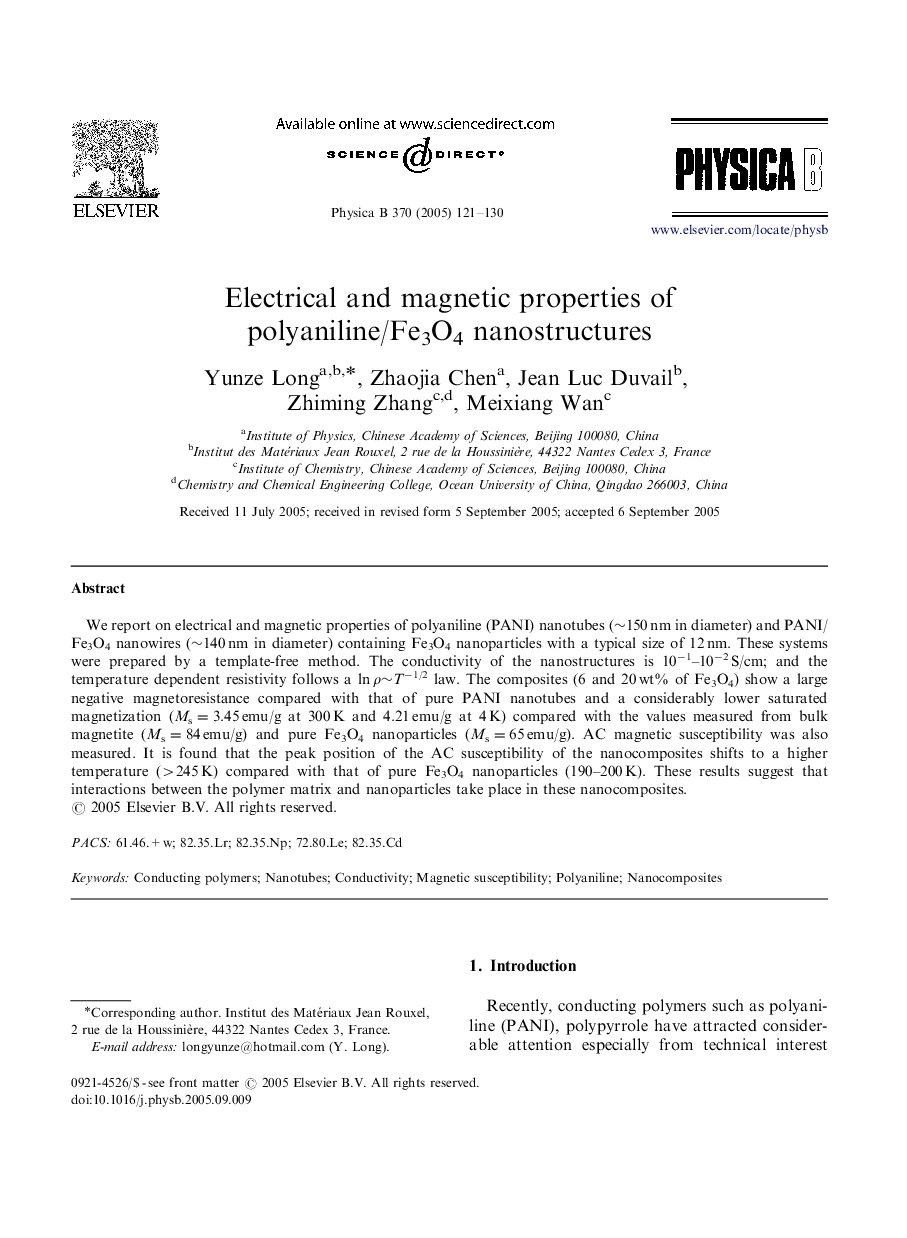| Article ID | Journal | Published Year | Pages | File Type |
|---|---|---|---|---|
| 9837302 | Physica B: Condensed Matter | 2005 | 10 Pages |
Abstract
We report on electrical and magnetic properties of polyaniline (PANI) nanotubes (â¼150 nm in diameter) and PANI/Fe3O4 nanowires (â¼140 nm in diameter) containing Fe3O4 nanoparticles with a typical size of 12 nm. These systems were prepared by a template-free method. The conductivity of the nanostructures is 10â1-10â2 S/cm; and the temperature dependent resistivity follows a ln Ïâ¼Tâ1/2 law. The composites (6 and 20 wt% of Fe3O4) show a large negative magnetoresistance compared with that of pure PANI nanotubes and a considerably lower saturated magnetization (Ms=3.45 emu/g at 300 K and 4.21 emu/g at 4 K) compared with the values measured from bulk magnetite (Ms=84 emu/g) and pure Fe3O4 nanoparticles (Ms=65 emu/g). AC magnetic susceptibility was also measured. It is found that the peak position of the AC susceptibility of the nanocomposites shifts to a higher temperature (>245 K) compared with that of pure Fe3O4 nanoparticles (190-200 K). These results suggest that interactions between the polymer matrix and nanoparticles take place in these nanocomposites.
Keywords
Related Topics
Physical Sciences and Engineering
Physics and Astronomy
Condensed Matter Physics
Authors
Yunze Long, Zhaojia Chen, Jean Luc Duvail, Zhiming Zhang, Meixiang Wan,
